
The Lower Saxon Landtag or the Parliament of Lower Saxony is the state diet of the German state of Lower Saxony. It convenes in Hanover and currently consists of 146 members, consisting of four parties. Since 2022 the majority is a coalition of the Social Democratic Party and the Greens, supporting the cabinet of Minister-President Stephan Weil (SPD).

The 2013 Lower Saxony state election was held on 20 January 2013 to elect the members of the 17th Landtag of Lower Saxony. The incumbent coalition government of the Christian Democratic Union (CDU) and Free Democratic Party (FDP) led by Minister-President David McAllister was defeated. The Social Democratic Party (SPD) formed a government with The Greens which held a slim, one-seat majority. Stephan Weil was subsequently elected Minister-President.

Stephan Weil is a German politician and the leader of the Social Democratic Party in Lower Saxony. On 20 January 2013, the SPD and the Green party won the 2013 Lower Saxony state election by one seat. On 19 February 2013, he was elected Minister President of Lower Saxony with the votes of SPD and Alliance '90/The Greens. From 1 November 2013 until 31 October 2014 he was President of the Bundesrat and ex officio deputy to the President of Germany. In November 2017, he was again elected Minister President with the votes of SPD and CDU.

The 2014 Saxony state election was held on 31 August 2014 to elect the members of the 6th Landtag of Saxony. The incumbent coalition government of the Christian Democratic Union (CDU) and Free Democratic Party (FDP) led by Minister-President Stanislaw Tillich was defeated as the FDP lost all its seats. The CDU subsequently formed a grand coalition with the Social Democratic Party (SPD), and Tillich was re-elected as Minister-President.

The 2016 Saxony-Anhalt state election was held on 13 March 2016 to elect the members of the 7th Landtag of Saxony-Anhalt. The incumbent grand coalition of the Christian Democratic Union (CDU) and Social Democratic Party (SPD) led by Minister-President Reiner Haseloff lost its majority. The Alternative for Germany (AfD) debuted at 24.3%, with every other parliamentary party recording losses, particularly the SPD and The Left.

The 2022 Saarland state election was held on 27 March 2022 to elect the 17th Landtag of Saarland. The outgoing government was a coalition of the Christian Democratic Union (CDU) and Social Democratic Party (SPD) led by Minister-President Tobias Hans.

The 2017 Lower Saxony state election was held on 15 October 2017 to elect the 18th Landtag of Lower Saxony. The incumbent coalition government of the Social Democratic Party (SPD) and The Greens led by Minister-President Stephan Weil was defeated. Though the SPD became the largest party in the Landtag largely fueled by the personal popularity of Weil, their gains were offset by losses for the Greens, depriving the government of its majority. The SPD subsequently formed a grand coalition with the Christian Democratic Union (CDU), and Weil continued as Minister-President.

The 2019 Brandenburg state election was held on 1 September 2019 to elect the members of the 7th Landtag of Brandenburg. It took place on the same day as the 2019 Saxony state election. The outgoing government was a coalition of the Social Democratic Party (SPD) and The Left, led by Minister-President Dietmar Woidke.

Falko Mohrs is a German politician of the Social Democratic Party (SPD) who has been serving as State Minister for Science and Culture in the government of Lower Saxony since 2022. He previously was a member of the Bundestag from the state of Lower Saxony from 2017 to 2022.

The 2021 Mecklenburg-Vorpommern state election was held on 26 September 2021 to elect the 8th Landtag of Mecklenburg-Vorpommern. The incumbent government is a coalition of the Social Democratic Party (SPD) and Christian Democratic Union (CDU) led by Minister President Manuela Schwesig.
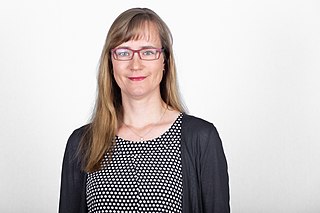
The 2021 Saxony-Anhalt state election was held on 6 June 2021 to elect the 8th Landtag of Saxony-Anhalt. The outgoing government was coalition of the Christian Democratic Union (CDU), Social Democratic Party (SPD), and The Greens, led by Minister-President Reiner Haseloff.
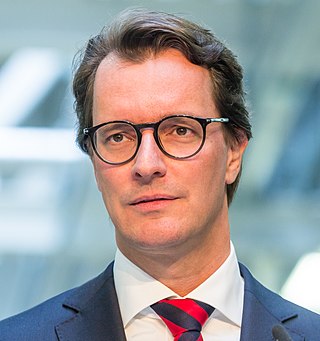
The 2022 North Rhine-Westphalia state election was held on 15 May 2022 to elect the 18th Landtag of North Rhine-Westphalia. The outgoing government was a coalition of the Christian Democratic Union (CDU) and Free Democratic Party (FDP) led by Minister-President Hendrik Wüst.
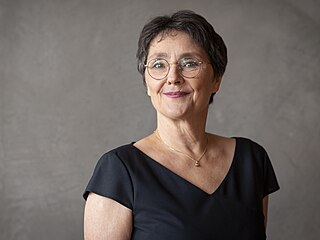
The 2022 Schleswig-Holstein state election was held on 8 May 2022 to elect the 20th Landtag of Schleswig-Holstein. The outgoing government was a coalition of the Christian Democratic Union (CDU), The Greens, and the Free Democratic Party (FDP), led by Minister-President Daniel Günther.

In Germany's federal electoral system, a single party or parliamentary group rarely wins an absolute majority of seats in the Bundestag, and thus coalition governments, rather than single-party governments, are the usually expected outcome of a German election. As German political parties are often associated with particular colors, coalitions are frequently given nicknames based on the colors included. Prominent political parties in Germany are the CDU/CSU (black), the SPD (red), the Greens (green), the Left, the AfD (blue), and the FDP (yellow).
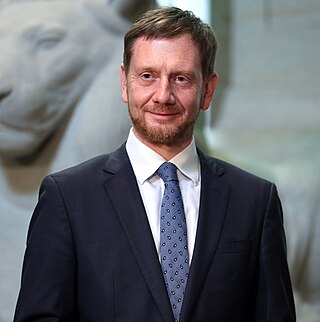
The Second Kretschmer cabinet is the current state government of Saxony, sworn in on 20 December 2019 after Michael Kretschmer was elected as Minister-President of Saxony by the members of the Landtag of Saxony. It is the 10th Cabinet of Saxony.

The second Weil cabinet was the state government of Lower Saxony between 2017 and 2022, sworn in on 22 November 2017 after Stephan Weil was elected as Minister-President of Lower Saxony by the members of the Landtag of Lower Saxony. It was the 29th Cabinet of Lower Saxony.

The Second Schwesig cabinet is the incumbent state government of Mecklenburg-Vorpommern, sworn in on 15 November 2021 after Manuela Schwesig was elected as Minister-President of Mecklenburg-Vorpommern by the members of the Landtag of Mecklenburg-Vorpommern. It is the 11th Cabinet of Mecklenburg-Vorpommern.

The Third Haseloff cabinet is the current state government of Saxony-Anhalt, sworn in on 16 September 2021 after Reiner Haseloff was elected as Minister-President of Saxony-Anhalt by the members of the Landtag of Saxony-Anhalt. It is the 10th Cabinet of Saxony-Anhalt.
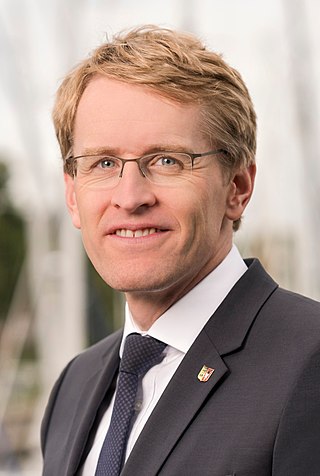
The Second Günther cabinet is the current state government of Schleswig-Holstein, sworn in on 29 June 2022 after Daniel Günther was elected as Minister-President of Schleswig-Holstein by the members of the Landtag of Schleswig-Holstein. It is the 27th Cabinet of Schleswig-Holstein.
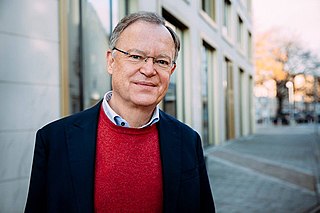
The third Weil cabinet is the current state government of Lower Saxony, sworn in on 8 November 2022 after Stephan Weil was elected as Minister-President of Lower Saxony by the members of the Landtag of Lower Saxony. It is the 30th Cabinet of Lower Saxony.


























